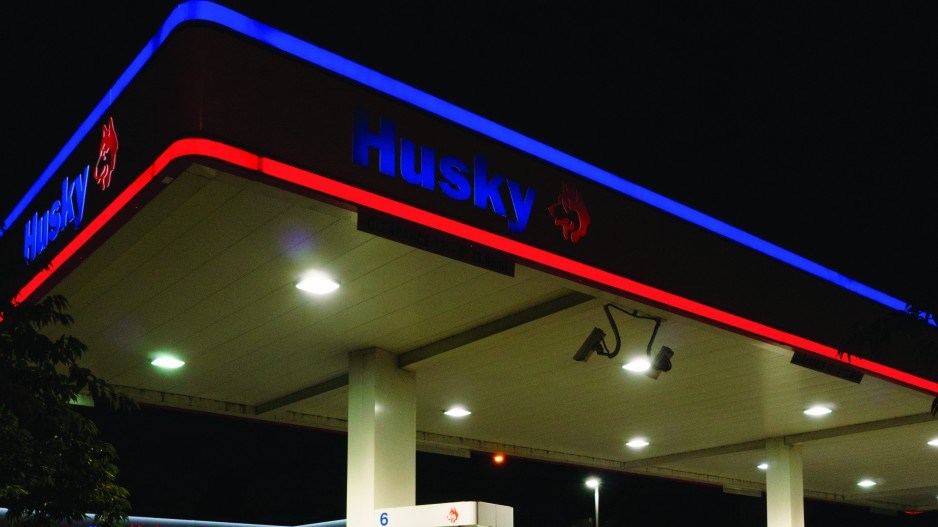British Columbians will pay more at the gas pump this week, and not just because of the usual seasonal spike that results in higher gas prices over summer.
B.C.’s carbon tax will rise from $35 per tonne to $40 per tonne April 1. That will add $0.01 per litre to the price of gasoline. British Columbians will be paying $0.09 per litre in carbon taxes after April 1.
And, for the first time, residents in Saskatchewan and other provinces that don’t pay provincial carbon taxes will start paying a new federal carbon tax on April 1.
At $20 per tonne, it will add $0.05 to the price of a litre of gasoline in Saskatchewan.
That may not be enough of a deterrent to stop Canadians from driving, but the Business Council of BC (BCBC) warns that B.C.’s carbon tax could stop industry.
Unless the B.C. government addresses the problem of “leakage” – companies fleeing the jurisdiction because of tax costs – B.C.’s carbon tax could indeed result in lower emissions, not necessarily by forcing industry to lower their emissions but by taking them next door, for example, to Washington state.
Whereas refineries in B.C. will pay $40 per tonne in carbon taxes, Washington state’s five refineries pay no carbon taxes.
When the carbon tax is added to all the other taxes and levies, Vancouverites pay about $0.50 per litre in taxes compared with $0.24 per litre in Washington state, according to GasBuddy analyst Dan McTeague.
“A steadily escalating B.C. carbon tax, together with other government-determined cost pressures such as higher corporate tax rates and the new employer health tax as well as rising fees and regulatory costs, may lead to slightly lower greenhouse gas [GHG] emissions – not because of reductions in GHG intensity or stepped-up innovation by B.C. industries, but rather because of shut-in or avoided investment in industrial activities and a shift of investment dollars elsewhere,” writes Denise Mullen, BCBC’s director of environment and sustainability.
Mullen compared B.C.’s carbon tax with all other jurisdictions in the world that have either carbon taxes or cap and trade, and concluded it is among the highest in the world.
There are 50 carbon-pricing schemes in place around the world, about half of which are carbon taxes, with the others being emissions-trading schemes (cap and trade). The highest carbon tax in the world is in Sweden – US$126 per tonne.
But, as Mullen points out, Sweden’s carbon tax applies to only 40% of the economy. Industries in Sweden don’t pay the Swedish carbon tax but participate in the European Union Emissions Trading System. B.C.’s carbon tax covers 70% of the economy.
“On a coverage basis, we top the list globally since all cap and trade systems usually apply only to industry rather than household and commercial operators,” Mullen writes in her analysis.
Mullen said B.C.’s carbon price is 50% higher than what competing industries pay in the European Union, including Sweden and other Nordic countries. Mullen said B.C. doesn’t have an effective policy for addressing leakage.
If an industry decides to shut down in B.C. because costs are too high, and sets up in a U.S. state without carbon pricing, it doesn’t reduce carbon emissions from that industry – it just moves them somewhere else.
B.C.’s cement industry is one sector that has been negatively affected by leakage.
In 2008, when the carbon tax was introduced in B.C., cement imports into B.C. from other countries was just 6%, said Michael McSweeney, president of the Cement Association of Canada.
Between 2008 and 2017, imports rose to as high as 42%, but have since dropped off to about 25%.
“Some American companies were able to bring in cement manufactured in Asia…and they would truck that cement into B.C., and it would come into B.C. with no carbon price on it,” McSweeney said.
There are two major cement plants in B.C. – the Lafarge plant in Richmond and Lehigh Cement in Delta.
It’s much cheaper to manufacture cement in Asia, McSweeney said, and there is no carbon tax on it.
“We leaked our production of cement, and our GHGs produced in B.C., to somewhere in Asia,” McSweeney said.
He added that shipping the cement from Asia adds about 25% to the GHG profile of the product.
“It didn’t matter that we just leaked our production to Asia, we still created greenhouse gases,” he said. “All we did was produce it somewhere else, and then we added another 25% GHGs in the transportation.”
Imposing a border adjustment tax has been floated, but under World Trade Organization rules, sub-national governments (provinces and states) don’t have the authority impose them. Only a federal government can impose a border adjustment tax.
A border adjustment tax does not appear to be on the Trudeau government’s radar screen, however.
“That issue has not been dealt with,” McSweeney said, adding his association is working with the provincial government to explore other options for insulating trade-exposed industries from competitors that don’t have carbon pricing.




